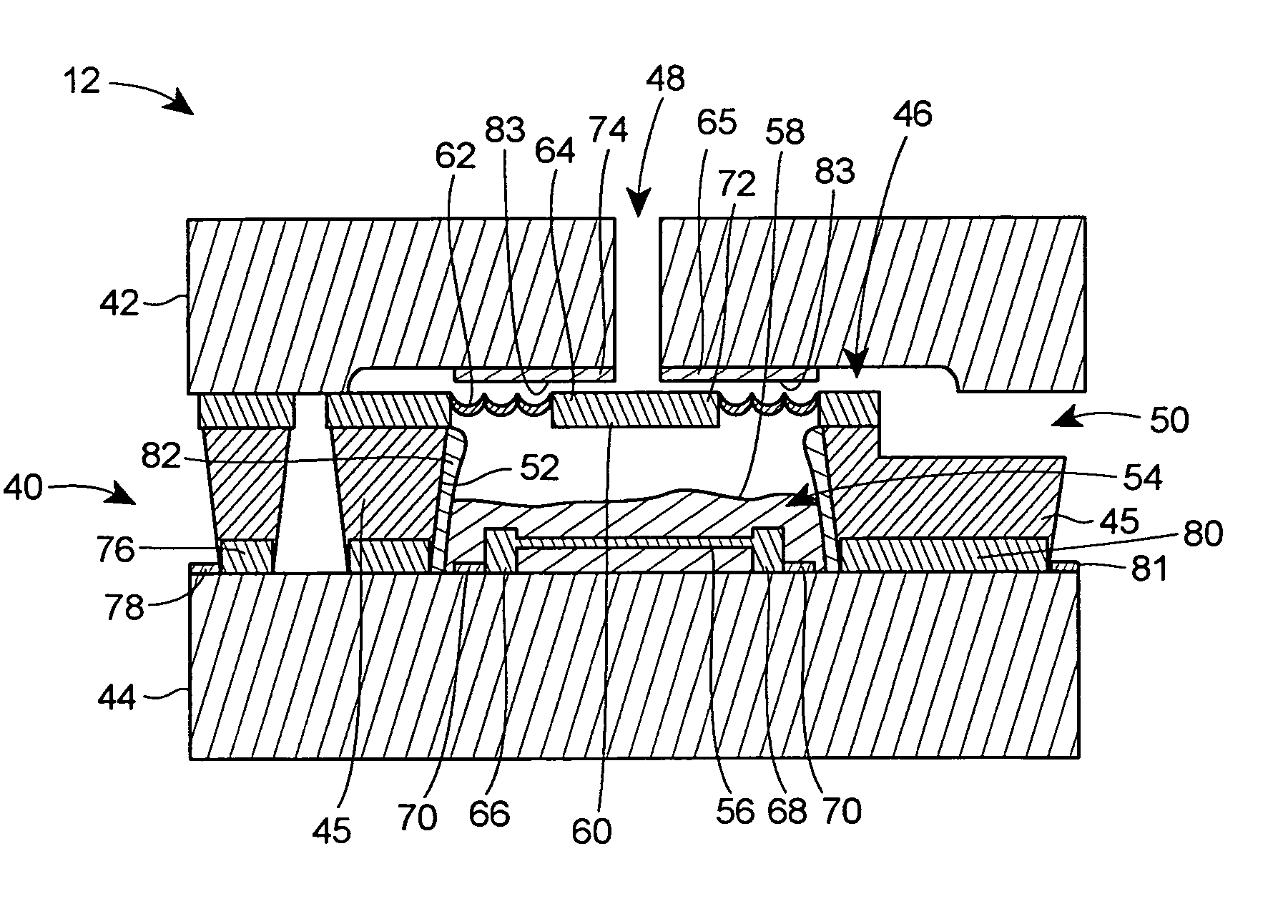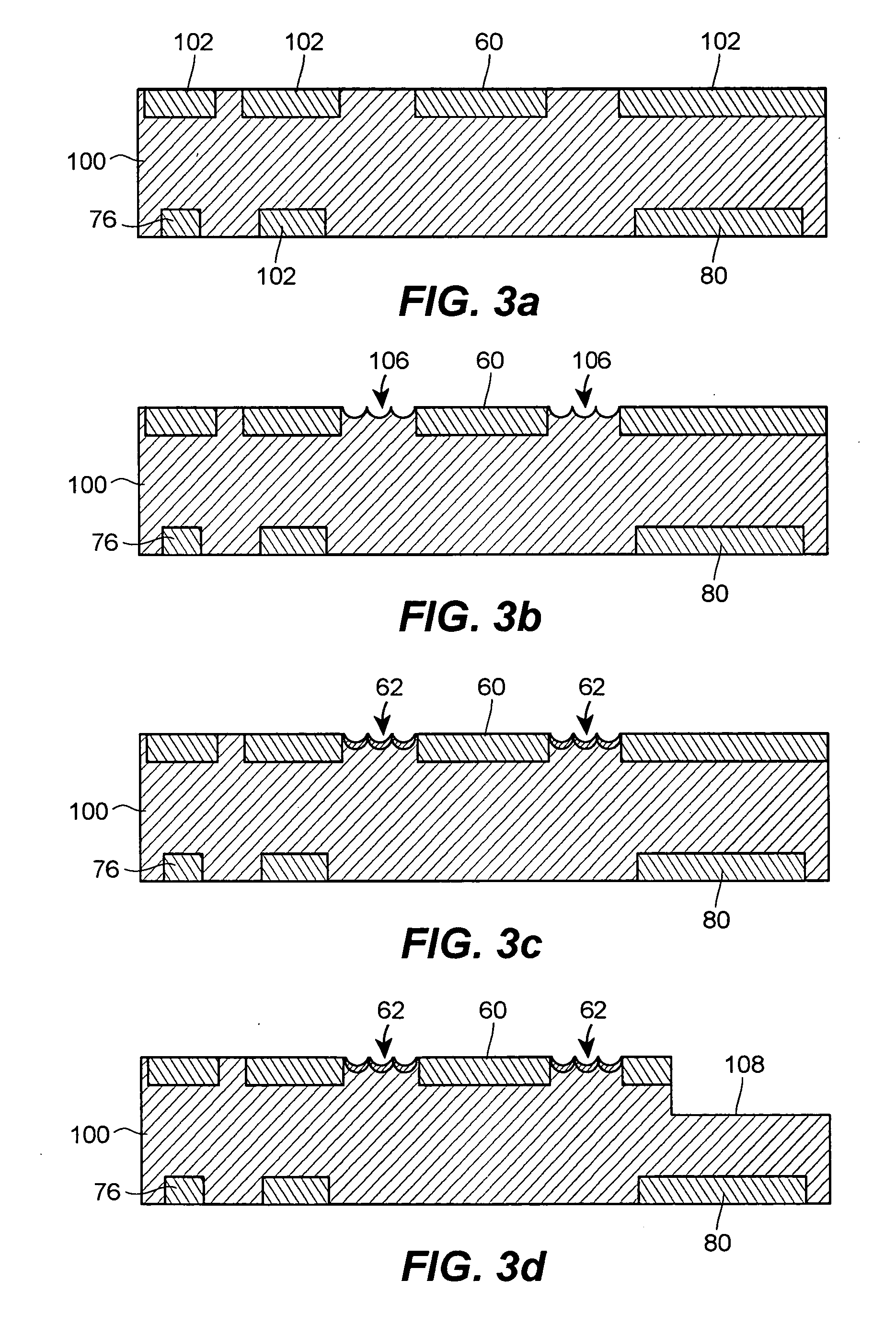Thermopneumatic microvalve
a micro-valve and thermopneumatic technology, applied in the field of microfluidic devices and systems, can solve the problems of large operating voltage, complex structure, and large actuation power, and achieve the effect of reducing the number of devices
- Summary
- Abstract
- Description
- Claims
- Application Information
AI Technical Summary
Benefits of technology
Problems solved by technology
Method used
Image
Examples
Embodiment Construction
[0021]Described herein is a microvalve design having an actuation mechanism complemented by a latch or hold such that the microvalve consumes power only during valve displacement or transitions from one stable state to another stable state. More particularly, the advantages of thermal-based actuation are combined with the benefits of electrostatic latching to provide bi-stable microvalve functionality with ultra-low power consumption. Further efficiencies are gained through the use of a sensor to determine accurately when power should no longer be applied to the thermal-based actuation mechanism such that power is only substantially consumed during the transitions. Power consumption during the transitions may also minimized with an insulated cavity that prevents unnecessary heating of the device outside of the actuation mechanism as described in greater detail hereinbelow.
[0022]Thermal-based actuation such as thermopneumatic drive mechanisms provide high force, small size, large val...
PUM
 Login to View More
Login to View More Abstract
Description
Claims
Application Information
 Login to View More
Login to View More - R&D
- Intellectual Property
- Life Sciences
- Materials
- Tech Scout
- Unparalleled Data Quality
- Higher Quality Content
- 60% Fewer Hallucinations
Browse by: Latest US Patents, China's latest patents, Technical Efficacy Thesaurus, Application Domain, Technology Topic, Popular Technical Reports.
© 2025 PatSnap. All rights reserved.Legal|Privacy policy|Modern Slavery Act Transparency Statement|Sitemap|About US| Contact US: help@patsnap.com



